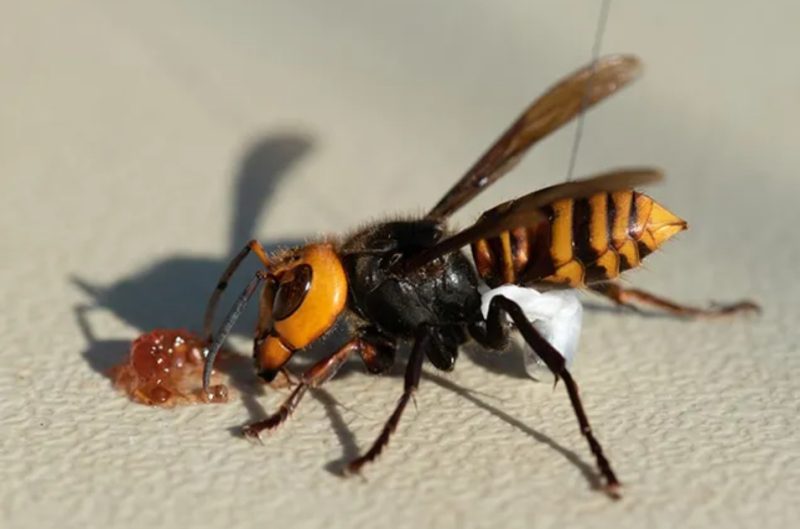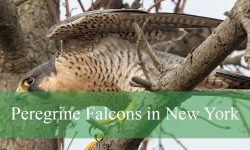California is famous for its golden beaches, redwood forests, and world-class agriculture—but beneath that sunny exterior lurks a lesser-known and unsettling truth. In recent years, growing concern has surrounded the presence of giant hornets—often sensationally called “murder hornets”—in parts of the western United States. Though most sightings have been confirmed in Washington, experts and entomologists are carefully monitoring California for potential migration or introduction of these massive and aggressive insects.
Known scientifically as the Asian giant hornet (Vespa mandarinia), this formidable species has captured global attention for its size, venom, and alarming attacks on honeybee colonies. With a body length of nearly two inches, massive jaws, and a sting that can penetrate thick clothing, the hornet has earned its terrifying nickname.
This article reveals secrets about giant hornets in California you didn’t know—including how they arrived, what makes them so dangerous, and why scientists believe the state’s climate and agriculture could become their next frontier.
Understanding the Asian Giant Hornet

The Largest Hornet on Earth
The Asian giant hornet is native to East Asia, primarily Japan, China, and parts of Southeast Asia. Adults measure up to 2 inches long, with queens even larger. Their orange-yellow heads, dark eyes, and black-striped abdomens make them unmistakable.
These insects are apex predators in the insect world, capable of decimating entire honeybee colonies within hours. A small group of hornets can kill thousands of bees, then carry off the larvae to feed their own young.
Behavior and Life Cycle
Giant hornets live in colonies with a clear hierarchy:
- Queen – the sole reproductive female who starts a new nest each spring.
- Workers – sterile females responsible for hunting, defense, and nest maintenance.
- Drones – males that mate with new queens in late summer.
Colonies typically nest underground in abandoned rodent burrows or rotting tree roots. Each colony lasts only one season, dying off in winter except for fertilized queens who emerge in spring to begin anew.
Why They’re Called “Murder Hornets”
The nickname “murder hornet” originated from Japan, where several fatal stings occur each year. Though rare, their venom contains powerful neurotoxins that can cause tissue damage, allergic reactions, and, in extreme cases, death.
For humans, however, they’re less of a direct threat and more of an ecological one—especially to honeybees, which are essential for California’s vast agricultural economy.
How Giant Hornets Could Threaten California
California’s Climate: A Perfect Match
Entomologists have analyzed the hornet’s environmental preferences and found that California’s temperate coastal regions, Central Valley, and foothills could provide ideal conditions for colony establishment.
The hornets thrive in mild climates with ample rainfall and abundant forests—precisely what Northern and Central California offer. Researchers warn that if introduced, counties such as Humboldt, Sonoma, Sacramento, and even Los Angeles could support hornet populations.
Agricultural Impact
California’s agriculture, worth over $50 billion annually, depends heavily on honeybee pollination. Crops like almonds, avocados, berries, and citrus rely on bees for reproduction.
A single hornet attack can wipe out an entire bee colony in hours, severely impacting local beekeepers and the broader pollination network. Even limited hornet spread could spell trouble for both farmers and ecosystems dependent on bees.
How Did Giant Hornets Arrive in the U.S.?
The First Detection
The first confirmed U.S. sightings of Asian giant hornets occurred in Blaine, Washington in 2019. Scientists suspect the hornets arrived through international shipping containers, possibly transported accidentally from Asia.
Since then, multiple eradication efforts have been launched to prevent establishment. Nests were located and destroyed in Washington State, but experts caution that isolated introductions could continue through global trade routes.
California’s Risk Factors
California’s ports and international trade hubs, such as Los Angeles, Oakland, and Long Beach, make it one of the most vulnerable states for accidental species introduction.
Cargo shipments containing wood, plants, or soil can unknowingly harbor insect queens or larvae.
The state’s agriculture, tourism, and transportation industries increase the chance of hornets hitching rides into rural and urban areas alike
Distinguishing Giant Hornets from Native Species
Common Misidentifications
Many Californians have mistaken large native wasps—like the cicada killer wasp or European hornet—for the Asian giant hornet. While these species look intimidating, they are harmless to humans and beneficial for controlling pests.
Here’s how to tell the difference:
Feature |
Asian Giant Hornet |
Cicada Killer Wasp |
|---|---|---|
Size |
1.5–2 inches |
1–1.5 inches |
Color |
Orange-yellow head, dark brown thorax |
Yellow and black striped abdomen |
Behavior |
Aggressive near nests, hunts bees |
Solitary, not aggressive |
Nest Type |
Underground colonies |
Individual burrows |
If you see a suspicious hornet, experts urge not to kill it, but instead report it to the California Department of Food and Agriculture (CDFA) for identification.
Inside a Giant Hornet Colony
Hunting Strategy
When attacking a beehive, hornets first mark the target with pheromones. Other hornets detect the scent and join the assault. Within minutes, they decapitate adult bees with their sharp mandibles and feast on the soft larvae inside.
This coordinated “bee massacre” is one of the most efficient predation behaviors in the insect world.
Nest Construction
Hornets build intricate papery nests made from chewed wood pulp. These nests can contain hundreds of chambers, housing larvae and pupae. Each nest may produce up to 200 new queens, which disperse in fall to find overwintering sites—a major reason populations can explode quickly.
The Superweapon: Venom
Their venom contains mastoparan, a compound that destroys tissue and triggers extreme pain. Multiple stings can cause dangerous allergic reactions, though fatalities are rare in North America. Protective suits used by Asian beekeepers are made of thick leather to resist stings that can penetrate standard clothing.
The Role of Beekeepers and Scientists in California
Surveillance Efforts
California beekeepers are on the front lines of hornet detection. The California State Beekeepers Association (CSBA) works with the CDFA and USDA to monitor traps placed near ports, forests, and apiaries.
These traps use pheromone lures to attract hornets, allowing scientists to study movement patterns and potential introductions.
Early Detection Is Key
Experts emphasize that once a giant hornet population becomes established, eradication becomes extremely difficult. The best defense is early detection and rapid response. California’s climate resilience programs now include invasive species tracking, especially in areas near shipping ports and orchards.
Myths and Misconceptions
Myth |
Truth |
Giant hornets have invaded California. |
False. No confirmed colonies exist, though vigilance is high. |
They kill humans regularly. |
Extremely rare; most people recover fully from stings. |
They target humans deliberately. |
False. Hornets only attack when nests are threatened. |
All big wasps are giant hornets. |
False. Many harmless native wasps are mistaken for them. |
They can destroy crops. |
False. Their impact is indirect through bee colony predation. |
Why California Needs to Stay Alert
Ecological Domino Effect
If giant hornets established in California, they could cause a ripple effect across ecosystems. Fewer bees mean fewer pollinated plants, leading to declines in insects, birds, and mammals that depend on flowering vegetation.
Economic Consequences
Honeybee pollination contributes billions of dollars annually to California’s economy. A hornet invasion could devastate beekeeping operations, increase crop costs, and disrupt agricultural exports.
Fire Recovery Concerns
In areas recovering from wildfires, native pollinators play a key role in plant regrowth. The presence of giant hornets could slow this recovery by decimating bee populations already weakened by habitat loss.
Strange but True Facts About Giant Hornets
- They can fly up to 25 miles per hour, covering long distances in search of prey.
- Their sting can dissolve human tissue, though it’s rarely fatal without multiple stings.
- Giant hornet queens hibernate underground through winter, emerging in spring to start new colonies.
- They can chew through wood to enlarge burrows or invade bee hives.
- Japanese honeybees evolved a defense—they swarm invading hornets and raise body heat to lethal levels.
- Hornet larvae secrete a protein-rich fluid fed to adults—a unique example of “larval farming.”
- Their eyes detect UV light, helping them navigate dark forests and locate prey.
Protecting California from Invasive Hornets
What Residents Can Do
Californians can play an important role in prevention by:
- Reporting sightings to CDFA via the official pest hotline.
- Avoiding killing unidentified wasps without confirmation.
- Maintaining clean environments around homes and farms to reduce nesting opportunities.
- Supporting local beekeepers and conservation groups.
Collaboration Is Key
Agencies such as the California Department of Food and Agriculture, USDA, and UC Cooperative Extension collaborate on public education and monitoring. The public is urged to remain informed but not alarmed—so far, California remains hornet-free.
The Bigger Picture: Invasive Species in California
Not Just Hornets
California’s biodiversity also faces threats from other invasive species like the spotted lanternfly, Mediterranean fruit fly, and Argentine ant. Each new introduction adds stress to native ecosystems.
The giant hornet story serves as a reminder of how fragile the balance between human activity and nature can be. Vigilance and quick response are essential to protecting both wildlife and agriculture.
FAQs About Giant Hornets in California
Are giant hornets already in California?
No confirmed colonies exist, but surveillance continues to prevent their establishment.
What should I do if I see one?
Take a clear photo from a safe distance and report it immediately to CDFA.
Can they sting multiple times?
Yes. Unlike honeybees, their stingers don’t detach, allowing repeated stings.
Are they worse than regular hornets?
Yes. They are larger, more venomous, and pose a greater threat to honeybees.
Do they attack pets?
No. They focus on other insects, particularly bees, not mammals.
What happens if they reach California?
If they establish, aggressive containment and eradication programs will be activated to protect agriculture and biodiversity.
Conclusion
The giant hornets of California are not yet a reality, but the potential threat remains serious enough to warrant vigilance. These massive predators, capable of decimating bee colonies and unsettling ecosystems, represent one of the most concerning invasive species risks of the decade.
California’s scientists, beekeepers, and environmental agencies are working tirelessly to ensure the Golden State remains hornet-free. Through awareness, prevention, and cooperation, we can protect pollinators—the tiny workers that sustain agriculture and life itself.
So, the next time you see a buzz near your garden, don’t panic—but stay alert. The story of giant hornets in California isn’t one of fear; it’s one of preparedness, science, and the resilience of nature under watchful human eyes.






